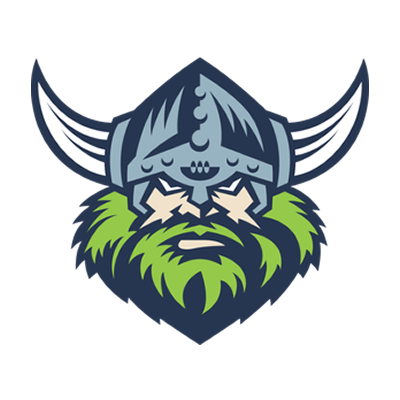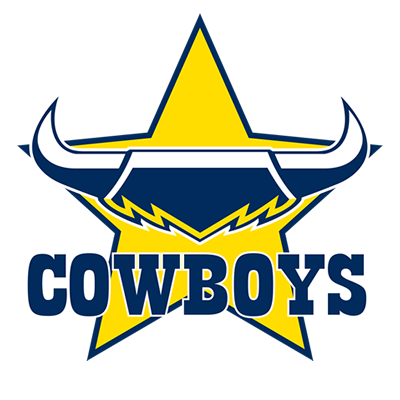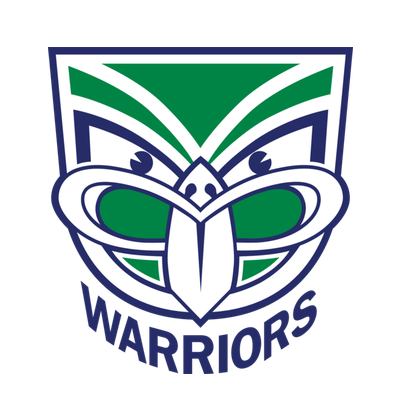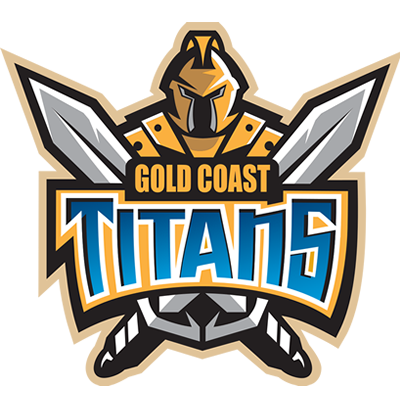The injury to Inglis last night made me wonder if Fullback is the most injury prone position. I read somewhere that they run an astonishing 9km a game against the nearest distance which is 5km. In addition, they are often required to run into Monsters on the kick return and use superhero capabilities as the last line of defence. I've thought about this for a while with the injuries to Brett, and add in Heyne, Slater, Barba, Dugan, Minicello injury histories and it seems like it may be so. Thoughts?
Most injury prone position
- Thread starter Budgie
- Start date
-
We had an issue with background services between march 10th and 15th or there about. This meant the payment services were not linking to automatic upgrades. If you paid for premium membership and are still seeing ads please let me know and the email you used against PayPal and I cam manually verify and upgrade your account.
You are using an out of date browser. It may not display this or other websites correctly.
You should upgrade or use an alternative browser.
You should upgrade or use an alternative browser.
EagleFromMay1967
Sky Punching : send them High as the Clouds
The thing is that your knees are size you are born with. Joint sizes dont increase with 'unnatural' levels of body development.
So you build up the top half of your body to cope with Rugby League. So your knees are now carrying 5-10 kilos more than they were meant to.
Of course, the bumping, crashing, dodging, tackling, getting tackled, kicking, puts an additional incredible strain on these vulnerable joints.
The Prince of Brookvale is the classic example. Remember when he first started? : light, a gazelle. But lets not single him out, HEAPS maybe 30% of NRL players get knee problems at some stage during their careers.
Now just extrapolate this 'knee' situation to all the other lower body joints. Simpels.
So you build up the top half of your body to cope with Rugby League. So your knees are now carrying 5-10 kilos more than they were meant to.
Of course, the bumping, crashing, dodging, tackling, getting tackled, kicking, puts an additional incredible strain on these vulnerable joints.
The Prince of Brookvale is the classic example. Remember when he first started? : light, a gazelle. But lets not single him out, HEAPS maybe 30% of NRL players get knee problems at some stage during their careers.
Now just extrapolate this 'knee' situation to all the other lower body joints. Simpels.
Alan
Reserve Grader
EagleFromMay1967 said:The thing is that your knees are size you are born with. Joint sizes dont increase with 'unnatural' levels of body development.
So you build up the top half of your body to cope with Rugby League. So your knees are now carrying 5-10 kilos more than they were meant to.
Of course, the bumping, crashing, dodging, tackling, getting tackled, kicking, puts an additional incredible strain on these vulnerable joints.
The Prince of Brookvale is the classic example. Remember when he first started? : light, a gazelle. But lets not single him out, HEAPS maybe 30% of NRL players get knee problems at some stage during their careers.
Now just extrapolate this 'knee' situation to all the other lower body joints. Simpels.
Agree, and equally important factors with a fullback are the position he is in when he gets hit, and the direction from which the hit is coming. Both run the full range of possible impacts. From stationary to full pace, from head-on to side-on and from behind.
In many instances the fullback is unable to brace himself or take any mitigating action whatsoever.
Lot of splinters on that bench!
I thought prop would be up there for injury quantity.
I thought prop would be up there for injury quantity.
mozgrame
Engorged member
Budgewoi Eagle said:The injury to Inglis last night made me wonder if Fullback is the most injury prone position. I read somewhere that they run an astonishing 9km a game against the nearest distance which is 5km. In addition, they are often required to run into Monsters on the kick return and use superhero capabilities as the last line of defence. I've thought about this for a while with the injuries to Brett, and add in Heyne, Slater, Barba, Dugan, Minicello injury histories and it seems like it may be so. Thoughts?
Fair question Budgewoi. That's one statistic Middleton probably doesn't record!
silvertail
Reserve Grader
There are two types of injuries.
Contact: through collision or hyper- extension or both. No player is immune from these injuries, regardless of body size or muscle mass. Luck plays a big part whether players get more than their of these injuries.
Non-contact: this is when a player is running and is nowhere near any defenders. Just running and then pop; torn hamstring, torn calf, torn groin, mashed anterior cruciate or the ever so painful, torn Achilles.
Injury prone players in the toughest game of all should only be judged by their ability to hold up to not having any non-contact injuries. While I agree that some players have knees that can't sustain a bulked up upper body, there are others players that are built like brick houses, top to bottom, that never have any non-contact injuries.
Contact: through collision or hyper- extension or both. No player is immune from these injuries, regardless of body size or muscle mass. Luck plays a big part whether players get more than their of these injuries.
Non-contact: this is when a player is running and is nowhere near any defenders. Just running and then pop; torn hamstring, torn calf, torn groin, mashed anterior cruciate or the ever so painful, torn Achilles.
Injury prone players in the toughest game of all should only be judged by their ability to hold up to not having any non-contact injuries. While I agree that some players have knees that can't sustain a bulked up upper body, there are others players that are built like brick houses, top to bottom, that never have any non-contact injuries.
RiverEagle
Bencher
globaleagle said:Lot of splinters on that bench!
I thought prop would be up there for injury quantity.
Yeah I agree on the high-density lifestyle of the prop-forward to invite injury. But fullback in the modern game is damn perilous now, too.
And the occupational hazard of being say Raiders or Sharks fans lately is worth a mention.
Headaches, hand-wringing, the beating of one's head against the wall, even wrist-slashing regularly...All chronic injuries too.
Fluffy
Journey Man
Budgewoi Eagle said:The injury to Inglis last night made me wonder if Fullback is the most injury prone position. I read somewhere that they run an astonishing 9km a game against the nearest distance which is 5km. In addition, they are often required to run into Monsters on the kick return and use superhero capabilities as the last line of defence. I've thought about this for a while with the injuries to Brett, and add in Heyne, Slater, Barba, Dugan, Minicello injury histories and it seems like it may be so. Thoughts?
Wow, thats 4.5km per 40 minutes, that is up there with Olympians.
well maybe not considering my fat ass runs 9km in about 50 minutes.
Guess i should be a high paid RL player.
Napper
Bencher
EagleFromMay1967 said:The thing is that your knees are size you are born with. Joint sizes dont increase with 'unnatural' levels of body development.
So you build up the top half of your body to cope with Rugby League. So your knees are now carrying 5-10 kilos more than they were meant to.
Of course, the bumping, crashing, dodging, tackling, getting tackled, kicking, puts an additional incredible strain on these vulnerable joints.
The Prince of Brookvale is the classic example. Remember when he first started? : light, a gazelle. But lets not single him out, HEAPS maybe 30% of NRL players get knee problems at some stage during their careers.
Now just extrapolate this 'knee' situation to all the other lower body joints. Simpels.
Tendons and muscles(obviously) would strengthen with resistance training, therefore, strengthening your joints.
Using your analogy, a professional body builer/powerlifter who can carry up to 60kgs in extra weight(muscle) would do his knees in walking up stairs.
Although if their extra body weight was fat, yes, you would be correct.
HappilyManly
Journey Man
Tendons, sinews can not be strengthened but only stretched.
Muscles can become too strong for them, hence the groin and pec tears Players get. Their muscles literally pull the connective tissue from the bone :s
Most serious body builders develop deformed backs, skeletons due to their over developed muscles pulling on their bones in abnormal ways.
Knee problems are the most common injuries to all athletes as they bear their body weight and the unusual twisting action of landing on hard or uneven surfaces.
The irony of being a professional athlete is that they all end up with serious arthritic conditions. Even swimmers suffer from chronic joint injuries.
Good luck to them all, their ability is to be admired and their obsession to be avoided
Muscles can become too strong for them, hence the groin and pec tears Players get. Their muscles literally pull the connective tissue from the bone :s
Most serious body builders develop deformed backs, skeletons due to their over developed muscles pulling on their bones in abnormal ways.
Knee problems are the most common injuries to all athletes as they bear their body weight and the unusual twisting action of landing on hard or uneven surfaces.
The irony of being a professional athlete is that they all end up with serious arthritic conditions. Even swimmers suffer from chronic joint injuries.
Good luck to them all, their ability is to be admired and their obsession to be avoided
mozgrame
Engorged member
http://www.bodybuilding.com/fun/drobson18.htm
by David Robson May 21, 2004
The overarching goal for most bodybuilders is to gain as much muscle as possible through lifting the heaviest weights possible. When one gets to a certain point in their training, and heavier weights cannot be lifted, a plateau often ensues.
This will more than likely halt progress until further increases can be made. Often, further increases in weight can not be made unless the correct foundations are in place. Sure, training for a number of years and making steady gains is great, but to really take the next step, and pile on the size, power assistance exercises may need to be employed. These strengthen the tendons and ligaments which support the muscles one is wanting to develop.
Ted Arcidi
Legendary power-lifter Ted Arcidi
Power assistance exercises were used back in the 50s and 60s by great power lifters such as Chuck Sipes and Doug Hepburn, to help them lift phenomenal weights without the aid of anabolic substances, state of the art nutrition and supplement programs and lifting shirts.
In fact, power lifters and power bodybuilders (those who incorporate power lifting principles into their bodybuilding program) really need to focus on developing tendon and ligament strength to lift the weights they lift. Power bodybuilders are typified by their extremely thick and dense musculature and only get this way through lifting well beyond what their non-power bodybuilding counterparts lift.
This requires a tremendous amount of power, stemming from strong tendons and ligaments.
Legendary power-lifter Ted Arcidi, himself no stranger to dense muscle mass, agrees that specializing in exercises that build greater tendon and ligament strength will enhance power and overall size.
by David Robson May 21, 2004
The overarching goal for most bodybuilders is to gain as much muscle as possible through lifting the heaviest weights possible. When one gets to a certain point in their training, and heavier weights cannot be lifted, a plateau often ensues.
This will more than likely halt progress until further increases can be made. Often, further increases in weight can not be made unless the correct foundations are in place. Sure, training for a number of years and making steady gains is great, but to really take the next step, and pile on the size, power assistance exercises may need to be employed. These strengthen the tendons and ligaments which support the muscles one is wanting to develop.
Ted Arcidi
Legendary power-lifter Ted Arcidi
Power assistance exercises were used back in the 50s and 60s by great power lifters such as Chuck Sipes and Doug Hepburn, to help them lift phenomenal weights without the aid of anabolic substances, state of the art nutrition and supplement programs and lifting shirts.
In fact, power lifters and power bodybuilders (those who incorporate power lifting principles into their bodybuilding program) really need to focus on developing tendon and ligament strength to lift the weights they lift. Power bodybuilders are typified by their extremely thick and dense musculature and only get this way through lifting well beyond what their non-power bodybuilding counterparts lift.
This requires a tremendous amount of power, stemming from strong tendons and ligaments.
Legendary power-lifter Ted Arcidi, himself no stranger to dense muscle mass, agrees that specializing in exercises that build greater tendon and ligament strength will enhance power and overall size.
EagleFromMay1967
Sky Punching : send them High as the Clouds
Be that stuff as it may, the fact is knees, elbows, ankles, shoulders - these are the injuries being most commonly suffered by the NRL players.
You see in tackles where players are having their ankles, knees trapped in completely unnatural positions, under the weight of 3 big men. Somethings gonna give. And i dont think there's anything, any rule, any prior training, that is concordant with the overall requirements of RL that you could introduce that would stop or even reduce this - other than limiting all tackles to 2 people.
You see in tackles where players are having their ankles, knees trapped in completely unnatural positions, under the weight of 3 big men. Somethings gonna give. And i dont think there's anything, any rule, any prior training, that is concordant with the overall requirements of RL that you could introduce that would stop or even reduce this - other than limiting all tackles to 2 people.
Napper
Bencher
mozgrame said:http://www.bodybuilding.com/fun/drobson18.htm
by David Robson May 21, 2004
The overarching goal for most bodybuilders is to gain as much muscle as possible through lifting the heaviest weights possible. When one gets to a certain point in their training, and heavier weights cannot be lifted, a plateau often ensues.
This will more than likely halt progress until further increases can be made. Often, further increases in weight can not be made unless the correct foundations are in place. Sure, training for a number of years and making steady gains is great, but to really take the next step, and pile on the size, power assistance exercises may need to be employed. These strengthen the tendons and ligaments which support the muscles one is wanting to develop.
Ted Arcidi
Legendary power-lifter Ted Arcidi
Power assistance exercises were used back in the 50s and 60s by great power lifters such as Chuck Sipes and Doug Hepburn, to help them lift phenomenal weights without the aid of anabolic substances, state of the art nutrition and supplement programs and lifting shirts.
In fact, power lifters and power bodybuilders (those who incorporate power lifting principles into their bodybuilding program) really need to focus on developing tendon and ligament strength to lift the weights they lift. Power bodybuilders are typified by their extremely thick and dense musculature and only get this way through lifting well beyond what their non-power bodybuilding counterparts lift.
This requires a tremendous amount of power, stemming from strong tendons and ligaments.
Legendary power-lifter Ted Arcidi, himself no stranger to dense muscle mass, agrees that specializing in exercises that build greater tendon and ligament strength will enhance power and overall size.
Yeah. There's probably another 1000 articles that state tendons are strengthened through various weight/resistants training.
Alan
Reserve Grader
For the dull ones I will repeat my answer.
Whilst all comments regarding the physiology of athletes is relevant it is not addressing the question of the comparable injury frequency of different postions,
All players have tendons.
When the level of the force of impact is a constant the two overwhelming factors that contribute to injury are
1) Angle of Impact
2) Aforeknowledge of impact. (ability to brace or mitigate impact)
Fullbacks in the NRL and displaying similar injury patterns to NFL players where impact can come from any direction at anytime.
Forwards for all the heavy hitting are generally dealing with impact from the front quarter and at a known time.
Whilst all comments regarding the physiology of athletes is relevant it is not addressing the question of the comparable injury frequency of different postions,
All players have tendons.
When the level of the force of impact is a constant the two overwhelming factors that contribute to injury are
1) Angle of Impact
2) Aforeknowledge of impact. (ability to brace or mitigate impact)
Fullbacks in the NRL and displaying similar injury patterns to NFL players where impact can come from any direction at anytime.
Forwards for all the heavy hitting are generally dealing with impact from the front quarter and at a known time.
Staff online
-
lszFirst Grader
| Team | P | W | L | PD | Pts |
|---|---|---|---|---|---|

|
5 | 4 | 1 | 23 | 10 |

|
5 | 4 | 1 | 14 | 10 |

|
6 | 4 | 2 | 48 | 8 |

|
6 | 4 | 2 | 28 | 8 |

|
5 | 3 | 2 | 25 | 8 |

|
5 | 3 | 2 | 14 | 8 |

|
6 | 3 | 2 | 38 | 7 |

|
6 | 3 | 2 | 21 | 7 |

|
6 | 3 | 3 | 37 | 6 |

|
6 | 3 | 3 | 16 | 6 |

|
6 | 3 | 3 | -13 | 6 |

|
5 | 2 | 3 | -15 | 6 |

|
6 | 3 | 3 | -36 | 6 |

|
6 | 2 | 4 | -5 | 4 |

|
6 | 2 | 4 | -7 | 4 |

|
5 | 0 | 5 | -86 | 2 |

|
6 | 1 | 5 | -102 | 2 |
Online statistics
- Members online
- 30
- Guests online
- 764
- Total visitors
- 794
Totals may include hidden visitors.

